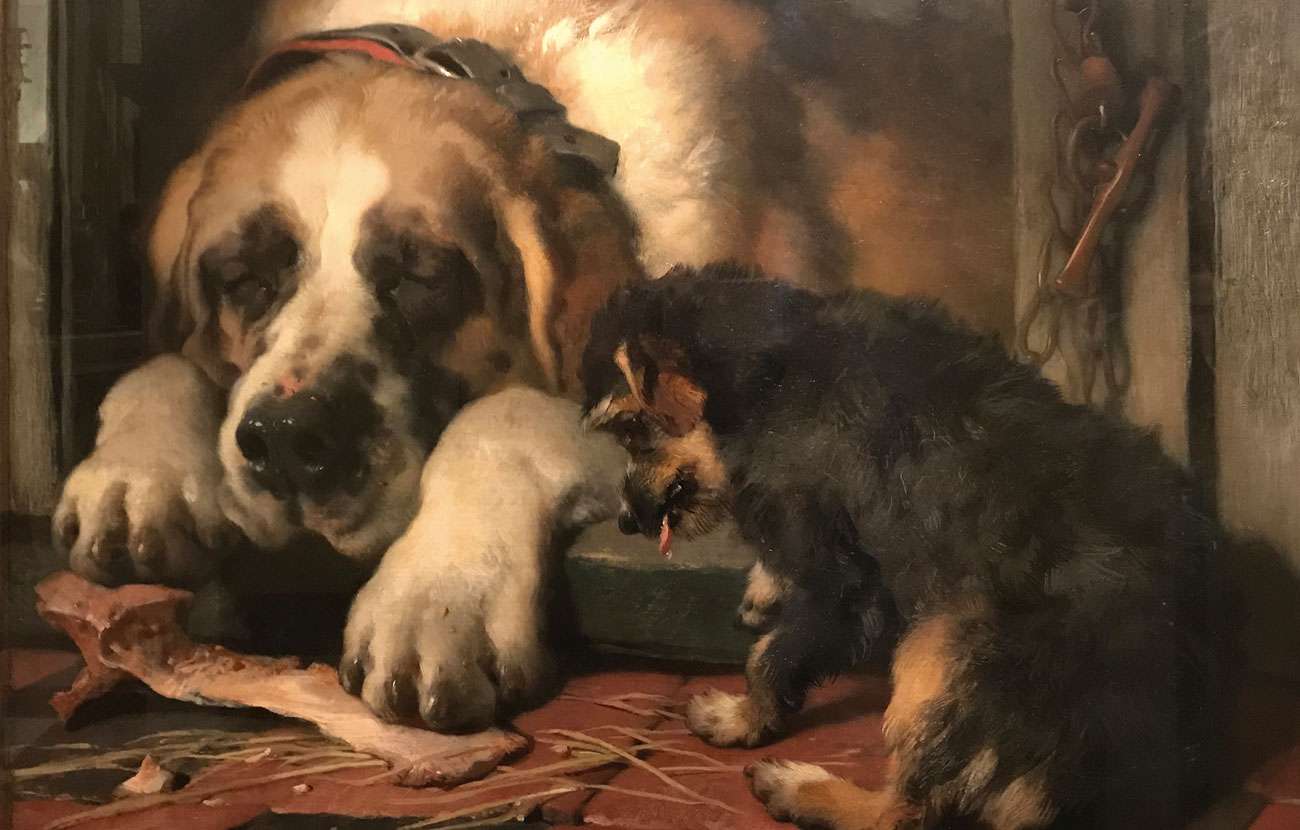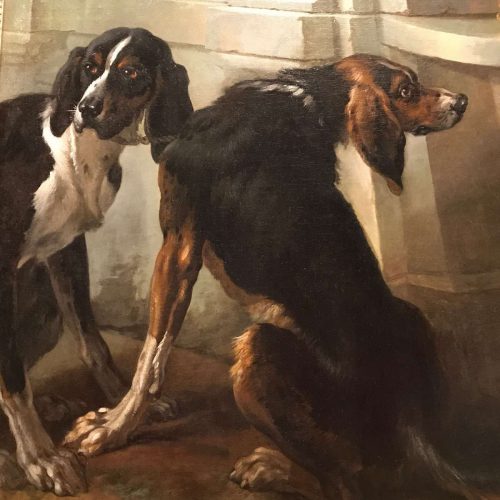
Looking for crumbs that fall from a Rich Man’s Table Sir Edwin Landseer (1802 – 73)
Last week I went to one of my favourite London Galleries – the Wallace Collection. It can be easily found on Manchester Square, just a few streets north of Oxford Street with Bond Street being its nearest tube station.
The collection of furniture, weapons and armour, porcelain and paintings, including many famous Old Master works, is named after Richard Wallace, the last member of the Seymour family whose wife bequeathed it to the nation in 1897. It has a fascinating history, do look at the new web site for a full history and to gain a flavour of the ornate elegance that typifies the Wallace Collection making it a real delight to visit. I was looking forward to wandering through the 30 galleries and letting them work the magical inspiration.

The Dead Wolf (detail)
A number of years ago I made a drawn copy of a painting in one of the galleries, Titian’s ‘Perseus and Andromeda’, which I intended to make it the subject of this article but it had disappeared – gone to be cleaned! It will be back very soon but it was disappointing not to see this well-known friend. Making a copy is both an exercise of exploration and a quest to understand how a Master made paint come alive. While making my drawing I had begun to know the painting well. But it was not there so I just wandered on catching one of the Wallace’s educational team giving a group of school children a lively talk, seeing masterpieces such as Frans Hals’ The Laughing Cavalier and Rubens’ The Rainbow Landscape until I turned the corner of a small, downstairs exhibition space and came across a small, intimate painting of two dogs by Sir Edwin Landseer. I thought of all the many happy, sociable dogs to be met when out walking locally. I felt I had found the perfect subject matter to explain something about painting from an artist’s eye by this popular Victorian painter artist famed for his dogs, horses and people not to mention the Landseer Lions in Trafalgar Square.
Looking for crumbs that fall from a Rich Man’s Table
I hope you will be able to appreciate the painting’s charm although my iPhone has not proved an absolutely ideal camera. Still it is not difficult to see a story of companionship between these two, the big sleepy old retainer and the mischievous little puppy. But have another closer look – at one of the white paws for instance. Now, instead of seeing a paw just let your eyes trace the beautifully articulated shape that Landseer has given this relaxed limb. Find the slight and subtle changes of direction in the outline which express anatomy underneath fur. Look for the white brushstrokes used to highlight the talons of his gently placed paw. And now go to the face of the little hungry puppy. You can see the final whiskery brushstrokes that are used to express his tufty fur and another two strokes of pink – there is the tongue with a pearly drop on the end to accentuate his hunger and hopefulness.
Paintings have many personalities. They have subject matter and how that subject matter is painted in a series of hundreds and thousands of various and varied brushstrokes.

A Highland Scene Sir Edwin Landseer (1802 – 73)
When you next look at a painting, do look for these brushstrokes and try imagining the artist holding his brush and palette, as if it was you making those brushstrokes.
See more at: www.wallacecollection.org and Sir Edwin Lanseer.
www.marilynbailey.com
Instagram – marilynpaintbrushbailey











